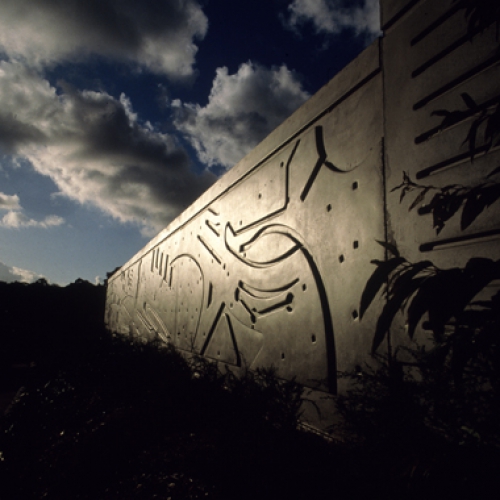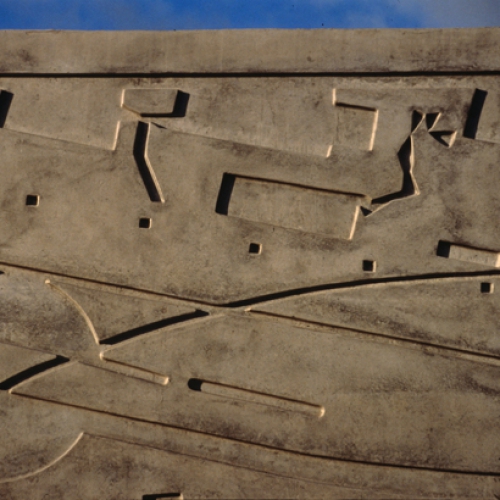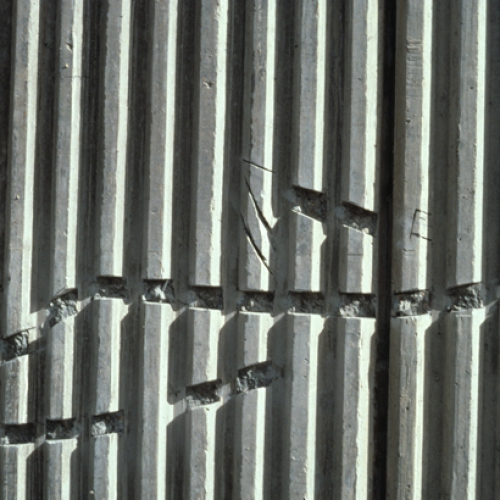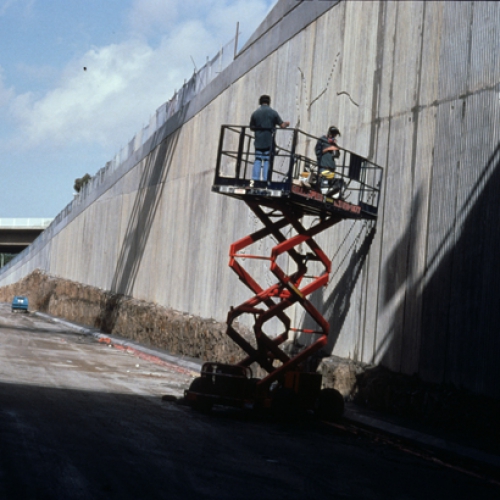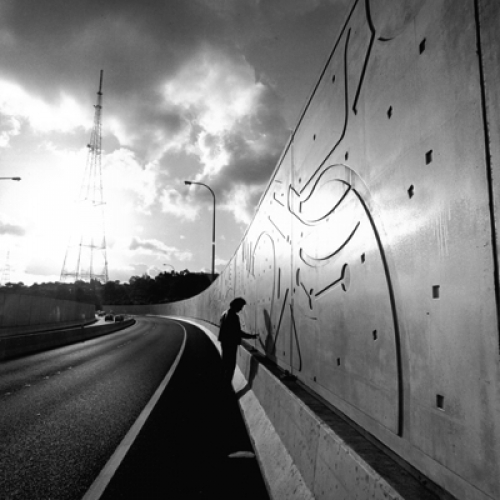1992
For the Gore Hill Freeway, after two years of development Goodwin chose a design language in 3 parts. Firstly, concrete noise walls were utilised on a large scale. The surface of the concrete pioneered the use of bas-relief motifs. These repeating forms were an abstraction of this particular freeway in plan. The result is a rhythmic signature particular to Gore Hill. As the road becomes viaduct the walls change to lightweight versions supported by distinctive sculptural supports.Secondly, historical reference was made to the architect Walter Burley Grif? n’s Incinerator building, via the use of one of his tile designs. The Grif?n Incinerator Building is located adjacent to the Freeway. Goodwin sourced the tile from the now demolished Pyrmont Incinerator and developed new moulds.
The third arm of the art/architecture language was the inclusion of Aboriginal rock engravings chipped into the ribbed retaining walls. These locally sourced and recorded images were chosen for their bold whale and shark forms. In one case the engraving was drawn from records as it is now destroyed. The others were recorded onto plastic on site. Positioned as they are at the gateways to the road they reinforce the idea of a distinct body or place with entrances and exits.
Of primary importance is the notion of the walls being perceived as a uni? ed whole – a synthesis of wall architecture, and motifs.

